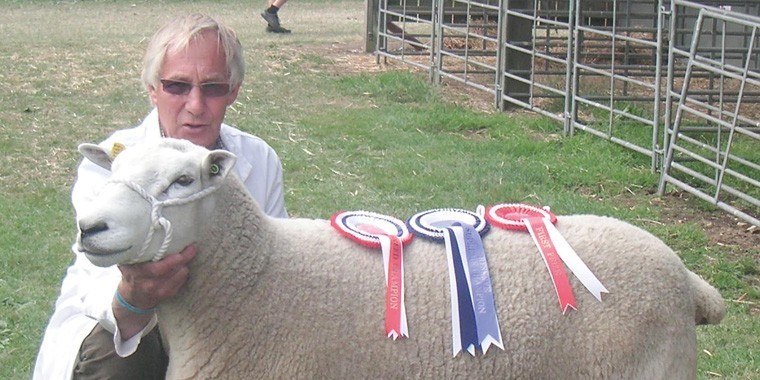One of the key concerns at this time is always feeding, in particular feeding the ewes in the run up to lambing. Some ewes, depending on the breed, condition and expected lambing percentage will do it all off grass and forages, either fresh or conserved. But for many, most I suspect, there is a need to provide some level of supplementary feeding in the last, critical, six to eight weeks before lambing when most of lamb growth occurs. Underestimate requirements and you risk ending up with small, vulnerable lambs and ewes without a great deal of milk under them; overestimate needs and you simply spend a lot of money generating problems for yourself with fat ewes, oversized lambs, and increased levels of lambing difficulties. Get it wrong either way and you run the risk of increasing your level of lamb mortality, even with the big strong lambs which, if they require help at birth, are 20 times more likely to die of infectious diseases than non assisted lambs.
Every year is different and presents different problems. This year I suspect that it will be over fit ewes that are generating many of these. Many producers had ewes that were carrying a little too much condition when they went to the tup and abundant grass supplies over the autumn have certainly not helped this situation. In addition the flush of grass around tupping time seems to have boosted lambing percentages, with plenty of producers scanning around 200%.
For some, the picture is a little more complicated as relatively high numbers of empty ewes – due to them being over fat at tupping – are masking lots of triplets and a lot more triplets than singles. As a result many producers are facing a double whammy of over fat ewes carrying triplets.
The obvious thing is to keep them fairly tight in mid pregnancy, if it is not too late, and let them loose a bit of weight. Half to three quarters of a condition score lost in mid pregnancy – once placental development is complete and before the lamb really starts to grow – does no harm to either the ewe or lambs as long as it is not overdone or done too quickly.
The problems really arise in late pregnancy with over fit ewes and just where to go with their feeding; the temptation is to cut back a bit on feeding and let them use some of their own resources. But in reality this is the last thing that we should be doing, as it is the fat ewes, with plenty of fat to mobilise, that tend to be the ones that will go down first with twin lamb disease. With housed ewes in particular, you simply have to feed and put up with the lambing problems that may arise. This does emphasise the need to manage condition score throughout the ewe’s production cycle and getting ewes in the correct condition at tupping does tend to make life significantly easier later on.
On the subject of feeding, I see no reason why sheep shouldn’t be challenged from time to time. It is easy just to do what you have always done or feed everything by the book. But I discovered a long time ago that you need to get to know your sheep and feed what “they” need, which, depending on the breed, is often significantly less than the their theoretical requirements. But you do have to know your sheep and for any significant changes, monitor any impact on performance fairly closely.
I know that so long as my ewes have access to molasses blocks, they will perform on a lot less than their theoretical requirements. By looking after the rumen (or the rumen microorganisms) I know that the rumen will look after the sheep and what the rumen microorganisms need is a regular supply of readily available energy. This has certainly, over the years, significantly reduced my concentrate costs, with no adverse impact on performance.
Costs can also be reduced by exploring alternative feeds – either making more effective use of good quality conserved forages or, in the right location, making use of more forage crops. The latter is an area where we could learn a great deal from New Zealand: farming without subsidies has certainly focused NZ producers’ minds on reducing costs of production. Forage crops are certainly a lot cheaper per megajoule of energy and gram of protein than any concentrate.
There are also alternatives to normal concentrates. Trident now have a pretty good feed at 18% protein and 13.5 metabolisable energy which is a lot cheaper than any concentrate, but does need to be used, in late pregnancy, with some caution due to the quality of the protein. However used in a sliding combination with a normal, good quality sheep concentrate could provide a very useful ration. I’m certainly going to give it a try.




